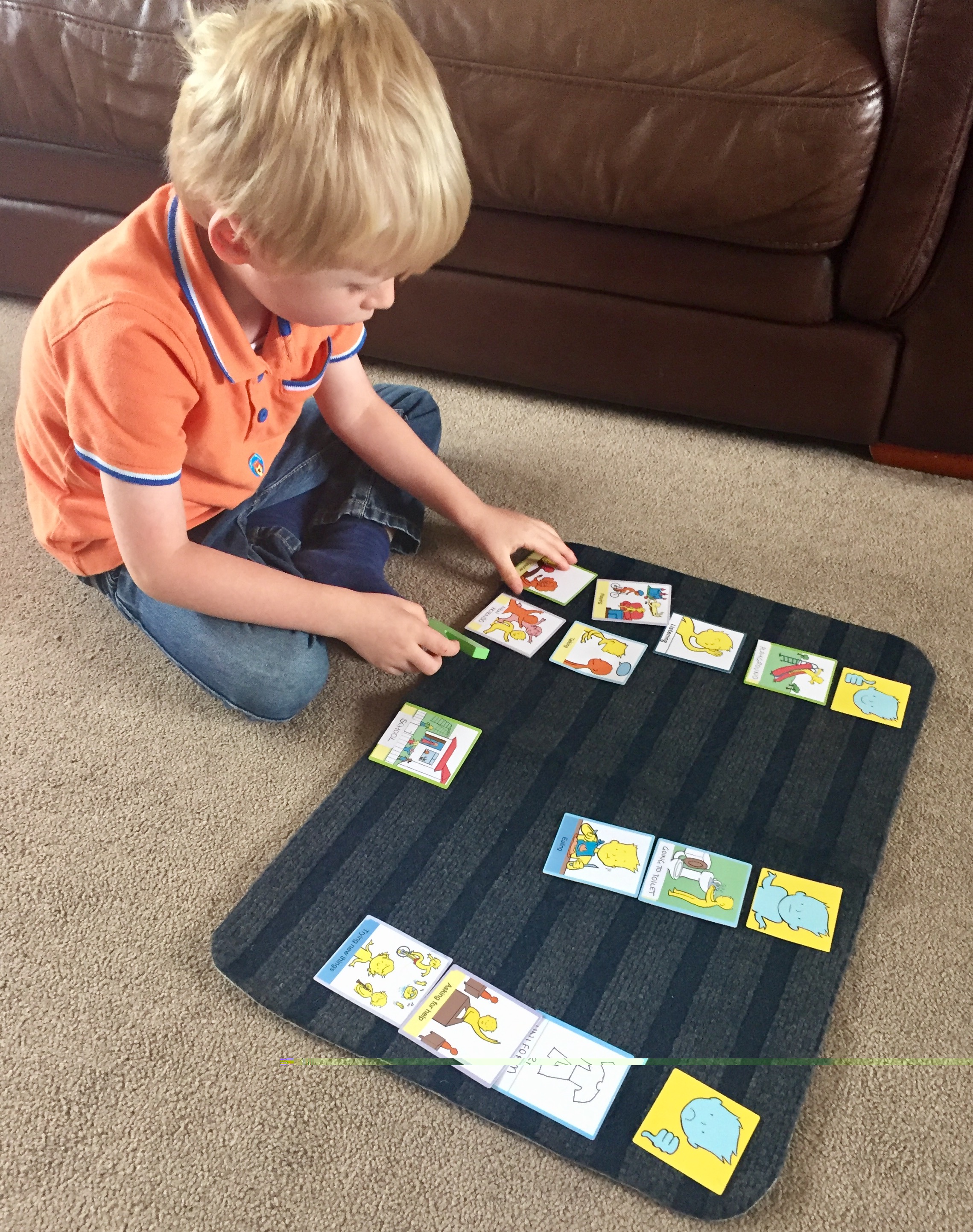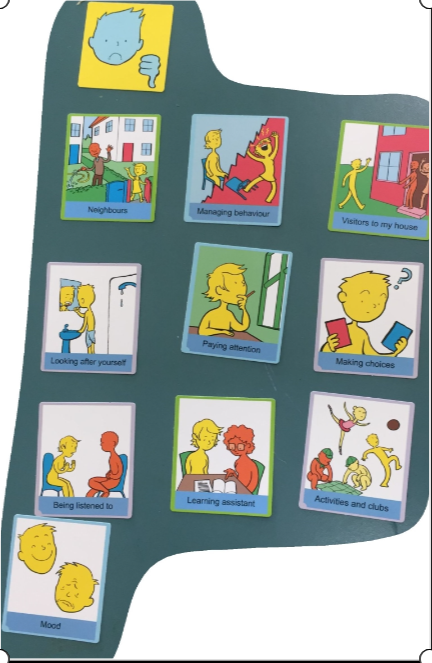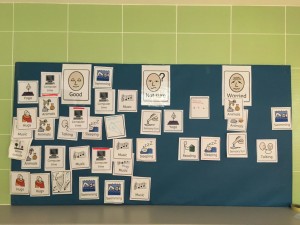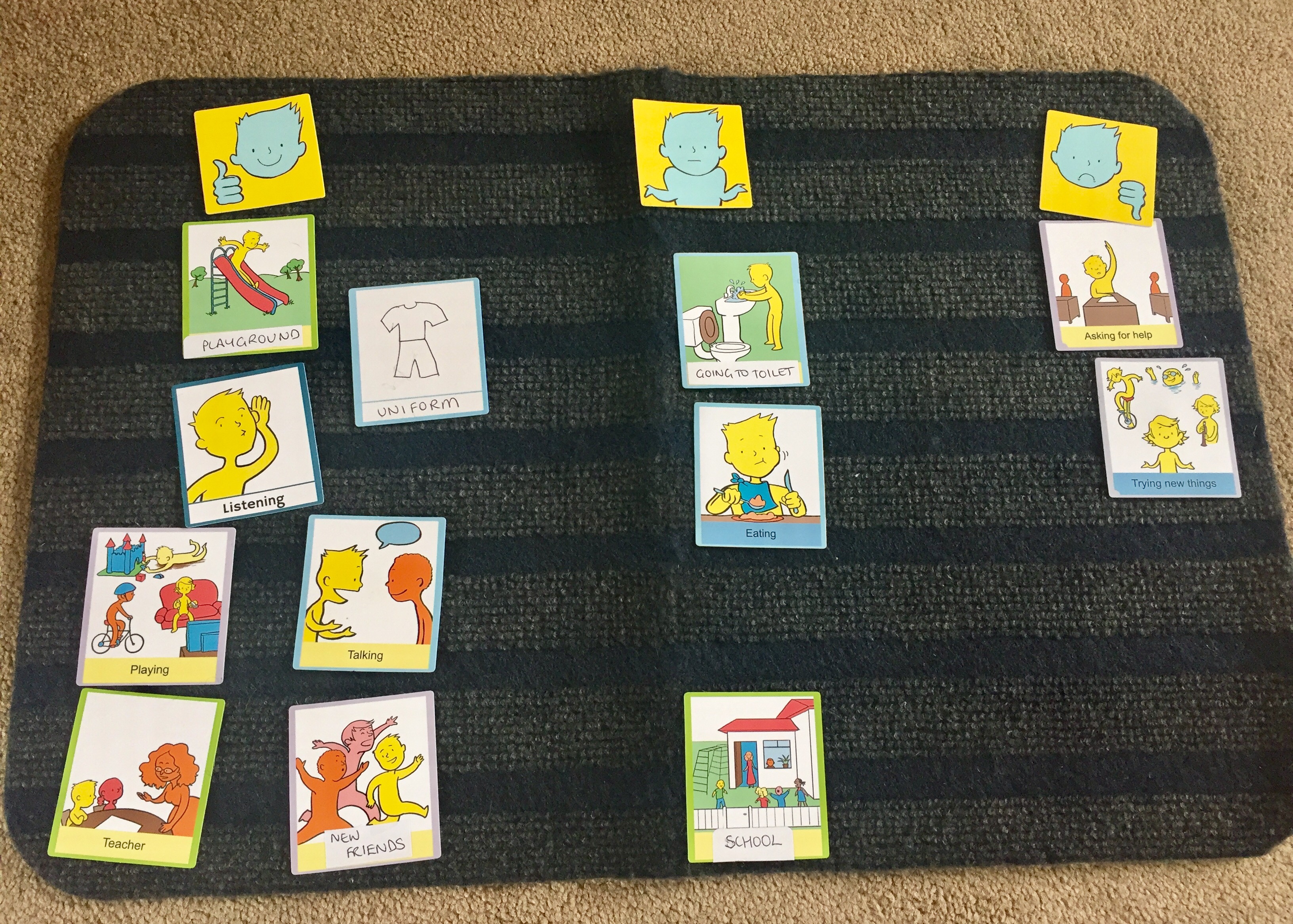Addressing the communication needs of people in youth justice is key to improving lives. The lack of attention to this is costly. On the 17th of April, we organised a seminar to look at the underlying issues and share good practice.
We were delighted with the collaborative mix of people attending. We had representatives from: the Scottish government, the NHS; Third sector organisations working in youth justice, the police, social workers, professional bodies, universities and social work.
Our thanks to Professor Richard Simpson for chairing the day and setting the tone by emphasising from the start that understanding communication is key to improving service delivery. Following his introduction a series of excellent and stimulating presentations took place creating a fusion of ideas and practice from Scotland and New Zealand.
- Kim Hartley Kean, head of the Royal College of Speech and language therapy Scotland office highlighted the current position in Scotland
- Sally Kedge and Alayne Mckee described the approach adopted by their organisation Talking Trouble in New Zealand.
- Jane Macer the therapeutic service co-ordinator from Starley Hall Fife described an whole system approach to embedding good communication practice within an organisation
- Yvonne McKeown and Sandra Polding Speech and Language Therapists working with young people in a NHS inpatient psychiatric unit in Glasgow shared some case examples.
In different ways the speakers brought up very similar themes:
- Communication can be treated glibly. There is a lack of understanding of what communication difficulties are and of the impact that they have on the lives of young people. These difficulties are often hidden and take time to identify. Lack of identification can have a huge impact on the future lives of young people.
- Finding ways to hear the young person’s voice is key both for the young person but also for organisations in order to deliver appropriate and effective care.
- Recognition of the intergenerational cycle and the importance of getting care and support correct so we break patterns and enable change.
- Providing collaborative solutions and understanding the breadth of communication will help services improve. However, given services often don’t know what they don’t know in terms of the impact of communication difficulties we have to find ways to express those solutions in language that those services can relate to and understand. Listening to organisations and exploring their processes by analysing the communicative demands of each stage can be a helpful way to start.
- Moving forward it is important to knock on open doors i.e. work with people who are receptive to recognising the impact of communication difficulties on young people and their lives but also find the strategic influencers who are sympathetic, in the words of our New Zealand colleagues ‘the aunts and uncles in the field’ who can help to promote the issue and raise awareness at a National level.
- You can’t explore the issue of trauma and adverse childhood experiences without certain precursor, building blocks being in place. This takes time and requires a constancy of approach.
- The importance of inclusive, visual tools becoming common place so that they are not used in isolation and in a vacuum.
- The challenge of supporting and nurturing a young person’s inner voice when they have significant difficulties with language.
- Lack of understanding of communication difficulties may lead to services responding to internalized behaviours that can lead to a fork in life; one way can send the young person down a route of offending behaviour services and the other mental health services.
- The solutions lie in partnership and collaboration between professions and services.
There were lots of creative ways of using Talking Mats that were shared. A couple of examples that stand out were
- Using Talking Mats with social workers to help them unpick what they already know about a young person’s language and communication. This approach helped them think about all the different aspects that contribute to communication and where the young person’s strengths and weaknesses lay e.g. non verbal communication , humour , word finding , understanding complex information, understanding simple information etc .
- Using Talking Mats to support a psychiatric assessment of a young person. One person used his Talking Mat to say he was hearing voices something he was unable to disclose verbally. In this case this enabled an accurate mental state assessment and non-custodial sentence.
I will leave the last word to a young man living in an inpatient unit to support his mental health, his words about communication difficulties are ‘They make you more vulnerable when bad stuff happens’ how true that is and this is why it is important we work together to improve services .
Next steps The community justice network met in the afternoon and were challenged to think about the opportunities and barriers in developing services – read the for blog that covers the afternoon ……… If you missed the seminar and want to join a multiagency network to discuss this and help take this forward in Scotland then please let us know .
Click to read the excellent presentations from the seminar
- CJSCENTalkMatsPresentation170418
- Talking Mats presentation 17 April 2018 Sally Kedge Alayne McKee TTANZ final
- TM seminar 04-18
- Talking Mats & Justice CEN April 2018 Draft
Talking Mats in Germany is being extended by one of our trainers Professor Norina Lauer. Here she describes two of her current interesting projects and we look forward to reading her findings.
The German version of the Talking Mats app will now be tested in two more projects in the west of Germany. As the communication symbols were developed for English-speaking clients six German SLT students of the Hogeschool van Arnhem en Nijmegen (han) in the Netherlands want to find out if the words and symbols fit to German clients and their cultural background. Because of cultural differences between Scotland and Germany it is necessary not only to adapt the language but also check the icons.
One of the projects will be conducted with children between the ages of 8 and 10 years. The children will be asked to classify the symbols from their age-group. The question will be whether the symbols and words are relevant for the situation of German children. If not, they will be asked for possible alternatives.
The other project focuses on adults. One group of people with aphasia and one group of healthy persons will be tested. Every tested person scores the 57 icons concerning their correspondence with the words written down below by using a scale from 0 to 3. In addition, possible graphic alternatives will be enquired and collected. The two groups of adults will be used to determine if there is a significant difference between the obtained results from each group.
Sally Kedge, Speech and Language Therapist from Trouble Talking New Zealand shares two powerful case examples of using Talking Mats with children and families caught up in the criminal justice system.
This week it was hot in New Zealand, so I sat under a tree in a school playground in the shade with an eight-year-old girl to do a Talking Mat. I’m a speech-language therapist engaged by the child protection agency who have guardianship of her. This doesn’t happen that often in NZ but the team involved with this girl and her brother realised that as well as dissociative behaviour related to the impact of trauma due to family violence exposure, there was also significant difficulty with language acquisition for both children. The mix of a trauma history and a language disorder was resulting in significant difficulty expressing emotions and explaining what had happened when behavioural outbursts happened.
Some of my work with this child has been to help the team understand how her language profiles impacts on her life, and to develop her language skills at school via a programme she carries out with a teacher-aide and a friend. My role has also involved helping her understand her own life story and to equip her to process this, as it hasn’t been a pretty ride so far.
At a multidisciplinary planning meeting for her and her sibling recently, the team were concerned to make sure the children had accurate information about when their father was going to be released from prison. Their mother has recently been released too but no one knows where she is currently. I suggested a Talking Mat might help us to find out what she knows at the moment about her parents and how she felt about the next few months, as there are likely to be some changes happening in her world. We wanted to give her accurate information so she didn’t need to fill in the gaps herself.
Using a Talking Mat helped me establish that currently this child feels many things in life are going well. This is good progress. However, we identified a few things that she felt were not going that well at school (‘in the middle’) and I was then able to talk to her teachers about preparing for the new school year starting in February. We figured out that she is looking forward to seeing her dad but doesn’t know when she will see him or where he is going. A conversation with her Social Worker and the drug rehabilitation residence has allowed me to put together some visuals and a timetable to show what is going to happen next. Dad can have these as well as her carer and others in her team.
Another child with a similar history also did a Talking Mat with me last week. My purpose was to help the team find out how he feels his current care situation is going. A very mixed picture emerged with some concerning cards placed in ‘not going well’. I asked the boy at the end if he knew anyone who could help him with those things and he said, ‘no one’. I was able to explain that I am one of the adults who need to figure out how to make life easier for him and I would talk to some other adults and come back to see him. The photo I took of the Talking Mat allowed me to follow up with the team and I took the photo back to the boy to explore further some of the ‘not going well’ cards. At this second visit, this boy initially did not want to speak at all, but he engaged fully in looking at the photo of the Talking Mat with me.
We used a scale of 1 – 5 (how much of a problem is this for you – 1 = not much, = 5 = really really bad) on a piece of paper that he could mark with a pen to explore the ‘not going well’ items in the photo. He picked out ‘mood’, ‘people coming to his house’ and ‘learning at school’ as ‘really really bad’. We agreed that these needed to get sorted out for him to make life easier and we agreed who I could talk to about these things. Once we got that agreed and written down, he initiated some conversation about less heavy topics and started playing. I’m now following up with the team. Easier said than done, but without the Talking Mat I don’t think we would have got his views so clearly.
Our Talking Trouble Aotearoa NZ team is involved with children, young people and adults involved with care and protection, justice, mental health and behaviour agencies. We have been very excited about the wide range of opportunities that Talking Mats has provided us and the professionals we work with to explore people’s views on their own situations, their preferences, and their well-being. This year we’ve been exploring how Talking Mats might be used in our contexts:
– in sexual assault health assessments undertaken by specialised health professionals
– for Social Workers in our Youth Justice and Care and Protection Communication Projects
– When finding out about how people feel about talking and understanding in legal contexts such as courts and Family Group Conferences when we are engaged as court-appointed Communication Assistants (equivalent to ‘intermediaries’),
– and in our own speech-language therapy assessments and interventions.
The social workers, paediatricians, teachers, lawyers and others we work with have also been excited about exploring how Talking Mats can assist in these contexts. We’re looking forward to more training from the Talking Mats team next year.
sallykedge@talkingtroublenz.org
Come and hear Sally speak at our Criminal Justice Seminar on the 17th of April 2018. Contact info@talkingmats.com for more information.
Thanks to Rosie Murray for this great blog describing how she used a collaborative Talking Mats ‘Wall’ to help students comment on how different activities inside and outside college make them feel.
As a student, I trained in the Talking Mats approach, after finding it incredibly useful in clinical placements. I am now a speech and language therapist at St John’s College in Brighton. This is a college for young adults with autism, learning disabilities and SEBD. Our learners have a wide range of communicative needs and cognitive abilities. I was approached by our nursing team in the lead up to world mental health awareness day, as they were organising a ‘tea and talk’ session for our learners of all abilities.
We organised a range of activities, such as symbolised conversation starters. However, we felt we needed something to allow our less verbal learners to make their voices heard. I thought back to my training, and remembered Joan Murphy talking about large, collaborative Talking Mats – or ‘talking walls’. We discussed this idea, and felt it would be a great way for students to feedback on how different activities inside and outside college make them feel.
It took some considerable planning. Due to the emotional needs of some students, our top scale required us to avoid words that were too upsetting for individuals. In the end we settled on ‘good’ (with a widget ‘calm’ symbol) and ‘worried’. We also wanted it to provide a genuine opinion, so although we considered including activity options that were clearly negative, e.g. ‘fire alarms’, we took the opportunity to show our learners that we all have different opinions on things, and that this is good. We hypothesised that because of this, learners would be skewed towards giving positive opinions, and this informed the order of presentation of the top scale and the activities themselves.
On the day, we had 15 different activities to give an opinion on, each with different border colours for differentiation, and of course blank tiles so our learner’s could come with their own activities. Students were encouraged to write their name on the back of a chosen activity, and a consistent script was used to present the wall to each learner. Makaton signing was used alongside the script to support understanding.Learners of all abilities offered their opinion, and it generated discussion between learners of differing abilities. It signposted staff to particular likes and dislikes of learners, and showcased the power of talking mats to all staff. For example, one of our learners is a cheerful young man, who uses minimal verbal utterances to communicate. When the board was presented to him, he very clearly selected ‘talking’ as an activity, and clearly indicated that it makes him worried. This has allowed us to reflect as a staff team about how we can support him to communicate with minimal anxiety.
Learners too took away some important lessons from using the wall. They saw that while some activities are VERY popular (e.g. computer time), some are quite polarised, e.g. animals. This highlights the important issue of mutually respecting each others differences. Since the event, staff have discussed ideas they have on how to utilise this tool. We are considering how we could use Talking Mats as a tool in our peer mentoring sessions between learners of higher and lower verbal ability, as we feel it would be beneficial for both mentee and mentor. We are looking forward to using Talking Mats as a flexible tool for the college in the future.
Please let us know of any other innovative ways of using Talking Mats!
Talking Mats is a useful tool to help parents see their child’s point of view.
The stage for each parent when their child also has an opinion about what is best for them can come as a surprise and is sometimes challenging. For parents of children with disabilities it can be even more so. This story is an example of how Talking Mats helped parents hear their own child’s voice amongst the background noise of the voices from health, education social and voluntary services.
David was in his final year of primary school. He attended a small village school and was transitioning to a large mainstream secondary. He has mobility problems due to cerebral palsy and uses a wheelchair. He can walk very short distances with effort using a walker and in his primary school used this method to move around the classroom and go to the hall for lunch and PE. This was a functional way to meet 2 of his targets : changing position and walking practise. His parents wanted this to continue when he transitioned to secondary school, although the health professionals involved felt it was going to be too difficult given the greater distances in the new building. An electric wheelchair was proposed for this new context. David’s parents were finding this next step challenging.
One of the professionals involved wanted to find out what David felt was important in his new school and used Talking Mats as a way of supporting him to think about various factors. The top scale used was ‘important/ not sure/ not important’.
David’s mat clearly showed that what was important to him in his new school was being with his friends. When his parents saw his mat they realised that this would be impossible if he was to move from class to class using his walker and it helped them make the transition to seeing him in an electric wheelchair. It also helped them see things from David’s point of view. They were more than happy to fit walking practise into a different part of his busy day because they had heard what was important to him.
Talking Mats allows different voices to be seen and heard.The name has been changed to protect identity.
Huge thanks to all the practitioners who have sent us guest blogs. We selected our 10 favourite guest blogs…in no particular order!
- Talking Mats to support children who stammer Kirsten Taylor, Speech and Language Therapist tells a moving story about how finding out what was upsetting a boy with a stammer helped to implement change.
- Hearing the voice of the child Emma Atkiss, Senior Educational Psychologist, shares her findings from the Wigan Pathfinder project reporting that using a Talking Mat helps to meet the 5 criteria of Shier’s model of participation.
- Talking Mats for capacity assessments in people with ASD/LD Ruth Spilman, Senior SLT from The Cambian Group, shares practical tips on assessing capacity.
- Castle hill school supports pupil voice Jenna McCammon, SLT and Rebecca Highton, SLT Assistant, tell 3 inspiring stories using TMs in: selective mutism; safeguarding and motivational interviewing.
- Supporting Looked After Children to have their say Karen Wilson, Principal Teacher for children with additional support needs in a mainstream secondary school shares her experience of using TMs to give young people a stronger voice in making decisions affecting them.
- Hearing the voices of Looked After Children Rachel Clemow, Head Teacher and Donna Wood, Education Support Worker, report that Talking Mats has enabled children to express their thoughts and views in a safe, neutral environment.
- Talking Mats and Mental Health Carla Innes, Clinical Psychologist for learning disability from Healthy Young minds Stockport talks about the impact of TM training on the whole team.
- Mummy I don’t want to go to nursery today read about how using a Talking Mat might shed some light on why a 4 year old was upset at the thought of going to nursery.
- How do you feel about starting school? The story of 4 year old twins and their thoughts about starting school.
- Sibling Attitudes Prof Juan Bornman from Pretoria in South Africa publishes a report on a study carried out with 27 typically developing children who have a younger sibling with a severe speech and language disability.
If you have been inspired and are not yet trained to use Talking Mats – come along to one of our training courses.
Laura’s 4 year old twin boys are just about to start school and she was finding it difficult to have a proper chat with them about how they are feeling. She wanted to think about how best to help them prepare for the transition from nursery so used Talking Mats.
We have done lots of ‘practice mats’ over the past few months – focusing on topics such as ‘food’, ‘animals, and ‘toys/games’, so I knew that the boys were both familiar with Talking Mats before I introduced the more emotive topic of ‘School’.
P was first to have a go at being a ‘Thinker’, with me as the ‘Listener’. We used the Top Scale ‘Happy about/ Not Sure/ Not Happy About’. P thought very hard about placing each option. It helped to have the pictures and mat to focus on rather than just me firing questions at him.

P’s finished mat gives us a clear indication of his feelings about school. The ‘check and change’ stage was very useful as P changed his mind about ‘uniform’ which he had originally placed under ‘Not Happy About’ – he said that actually he is happy because he will look smart in his new uniform!
Laura Holmes was pleased to meet up with Rachel Clemow, Head Teacher and Donna Wood, Education Support Worker who work for the Virtual Schools Team in Wigan to find out about the impact of Talking Mats training.
Donna accessed a Talking Mats Training last year delivered by a Talking Mats accredited Trainer in Wigan Educational Psychology service and quickly put her training into practice with the children that she works with, using the Consulting Children and Young People – Primary resource pack. Other members of the team soon recognised the potential benefits of introducing this approach themselves, and so, in April 2017, a further 15 members of the Virtual Schools Team received Talking Mats training.
Looked After Children can often struggle to express their thoughts and feelings, often as a result of their situation/ circumstances. This can be further compounded if they also present with speech, language and communication difficulties. There is a higher risk of such difficulties within the LAC population (Cross 1999 ).
Often there are many professionals involved with a Looked After Child, all asking a wide variety of questions, some of which can be highly personal and/or emotive in nature. The team have observed that children will sometimes end up giving answers which they think the listener wants to hear, rather than answers which reflect their true feelings/views – or the child may withdraw from the process entirely. Consequently, it can be very difficult to ensure that the true ‘voice of the child’ is being heard. Sometimes the children themselves struggle to understand what their own feelings are – often the topics and questions can be complex and involve abstract concepts.
Rachel and Donna report that the Talking Mats approach has had a big impact on their communication style when working with the children on their caseloads, and has enabled children to express their thoughts and views in a safe, neutral environment. Some of the comments they made about Talking Mats were that it:
– Enables the listener to get to know a child quicker and more easily as there is no pressure/expectation of the ‘thinker’ – it is a child/’thinker’ led approach.
– Provides way of supporting the child to open up to express their views and feelings, even if they have previously been hard to engage – and for the child to develop better insight into their own feelings.
– Helps to avoid the possibility of adult/listener misinterpretation of what the child is trying to communicate.
– Enables the child to focus on pictures – which appears to result in the child being more comfortable in expressing their own views and feelings – as opposed to what the child thinks the listener wants to hear.
– Provides a holistic view of the child – which can support target setting and planning at key stages for that child, for example, transition to High School.
– Gives the child something they can be successful at – there are no ‘wrong’ answers.
Donna shared a great example of how Talking Mats helped a young girl to describe an issue at home which she had not shared with any carers or school staff previously. The child placed the ‘home’ option symbol on the ‘not happy’ section of the mat then began to whisper to Donna explaining the reason why. This resulted in Donna being able to share the information with school staff and social care, consequently, the issue was resolved.
Services, organisations and schools in Wigan are already using the Talking Mats approach as a result of widespread training delivered by our Accredited trainers in the Educational Psychology Team. This provides a great example of how using Talking Mats across agencies can really help a whole area to become more child/ young person led.
The Virtual Schools team are now recommending the Talking Mats approach to other agencies working with the Looked After Children on their caseloads, such as adoption and fostering services.
If want to access the training then there are Talking Mats foundation courses run regularly in London, Stirling , Manchester and Newcastle . Once you have attended a foundation training and gained experience you can apply to become an accredited trainer .
Five short stories from our recent accredited training course in Stirling.
- A looked after child was unhappy but no one knew specifically why. Using the Talking Mats, she indicated that she was upset by the weekly phone call with her mother because it always happened when it was her playing time. The time of the call was moved to just before her bedtime but this resulted in bad dreams. The time of the call was finally moved to Saturday afternoon which helped her settle and reduced her distress.
- Talking Mats was used with an Iraqi boy who had come to England via Libya, Italy and the jungle camp at Calais. When he picked the symbol of a waiting room he indicated that despite all she had been through he really liked this because it reminded him of all the children in his family and made him happy.
- A 76-year-old man with a learning disability disclosed that he had been attacked and suffocated by his upstairs neighbour one week previously. It was only when he used the Talking Mats that he disclosed to anyone what had happened.
- A lecturer usually used quantifying measuring with her students to find out how they were managing their studies. Instead she used Talking Mats to find out how they were coping with their work life balance. One student told her that she was managing fine except that her pet rabbits always escape under the bed and it takes her a long time to get them back out so she does not let them out very often!
- Talking Mats was used with a man who had had a stroke and had to go into residential care because his family could no longer look after him. They were very worried that he was unhappy with the new care set up. He was able to show with the Talking Mats that he was happy about everything except that he was not given enough time when he went to the toilet. Once the staff realised this they then gave him more time which resolved the situation and reassured his family.
Please send us your Talking Mats stories – we love hearing them.
We’re always amazed to hear from people about the variety of topics they cover using Talking Mats –from how someone is managing their self care or domestic tasks, to arranging a wedding, or thinking about whats important at a funeral.
As a communication tool Talking Mats maximises a person’s capacity to reflect on a topic and express their view. It gives confidence in decision making.
Here are some other topics we’ve heard about recently.
- As a conversation tool in class
- Pupil voice in school improvement plan
- Client contribution to meetings and review day placement
- Respite
- Operations e.g. gastrostomy
- Health
- Postural management
- Where to live
- Childs opinions in relation to GIRFEC
- Respite feedback/choices
- SW assessments
- Choices available within service
- Going somewhere new
- Transitions
- Problem solving ie horse riding, identifying the problem
- Eating and Drinking
- Keeping Safe
- Social Media
What do you want to talk about? There is no limit!
 Online training login
Online training login 







